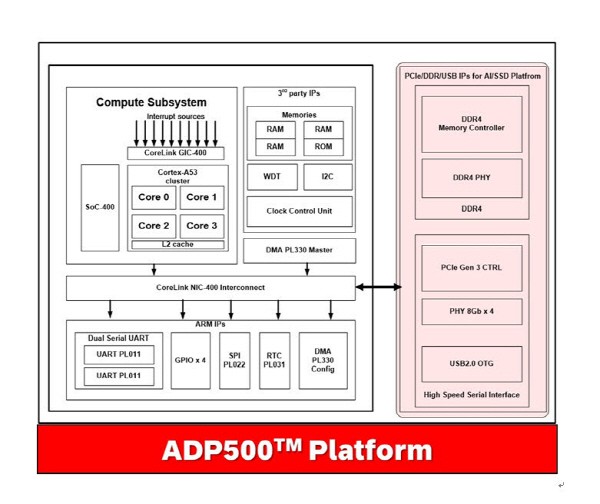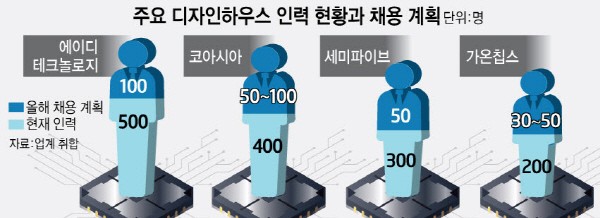Riding the trend of cutting-edge process conversion of semiconductor
ADTechnology, GAONCHIPS, and others
Planning up to 25% large-scale recruitment this year
Affiliated with Samsung DSP... Expecting w

Semiconductor design support companies, known as 'Design House', are hiring a large number of design engineers this year. It will secure up to 25% of the existing manpower even amid the employment cold wave caused by the semiconductor economic downturn. In response to the demand for semiconductor ultra-fine design, ‘Bulking up' will continue this year. As all of them are partners of Samsung Electronics, they are expected to contribute to the expansion of the domestic foundry ecosystem.
ADTechnology, GAONCHIPS, SEMIFIVE, and Coasia planning large-scale new recruitment this year. ADTechnology, which currently has a total of 500 employees including subsidiaries, will hire an additional 100 this year. SEMIFIVE plans to hire 50 people and GAONCHIPS will hire 30 to 50 manpower. Coasia is also known to be hiring between 50 and 100 manpower. It is unusual for small and medium-sized design houses to drastically hiring design engineers even though the semiconductor recession began in earnest in the second half of last year.
The design house serves as a 'Bridge' between the semiconductor design company (Fabless) and the foundry. They help to optimize fabless-designed semiconductors for the foundry process. ADTechnology, GAONCHIPS, SEMIFIVE, and Coasia all are part of Samsung Electronics Foundry's official design house 'Design Solution Partner' (DSP).
This progress is due to the trend of semiconductor advanced process conversion. Recently, not only global semiconductor companies but also artificial intelligence (AI) semiconductor startups have jumped into the development of ultra-fine semiconductors of 5 nano or less. 50 to 100 design engineers per project are needed to develop 5-nano semiconductors. This means that it is impossible to enter the advanced process design market without a large manpower. This is why the design house industry has increased the size of their organization through mergers and acquisitions (M&A) since 2020.

The recent increase in demand for 'Turn-key services' is also significant. The turn-key service is a service that directly designs semiconductors according to customer requests and applies them to the foundry process. Finished product companies such as automobile and home appliance companies that have desired performance and specifications but lack the ability to design semiconductors are mainly looking for them. An official from the fabless industry said, “There is an increasing trend in the finished vehicle and electric parts industry to request semiconductors to be applied to advanced driver assistance systems (ADAS) to design houses. As turn-key services, in which design houses directly provide everything from semiconductor intellectual properties (IP) selection to design and process optimization, are revitalized these days, it is necessary to secure manpower to respond to demand.” Design houses are securing semiconductor IP in advance to secure customers by launching a design platform that reduces the semiconductor development period and design cost.
As the size of design houses gradually increases, the domestic foundry ecosystem is expected to expand, which is led by Samsung Electronics. Currently, the number one global design house is Taiwan's Global Unichip (GUC), with about 700 to 800 employees. In cooperation with Taiwan's TSMC, they used a 'win-win' strategy from design support to foundry utilization, increasing their influence in the market. Domestic design houses are also expected to come closer to GUC if they secure additional manpower this year. An industry insider said, “The size of design engineers is one of the core competencies of design houses, and the growth of Samsung Electronics foundry-cooperating design houses can eventually attract more customers to Samsung Foundries, which can help build a stronger ecosystem.”

By Staff Reporter Dong-jun Kwon (djkwon@etnews.com)